Babies and Young Children : Week 4
September 17, 2021
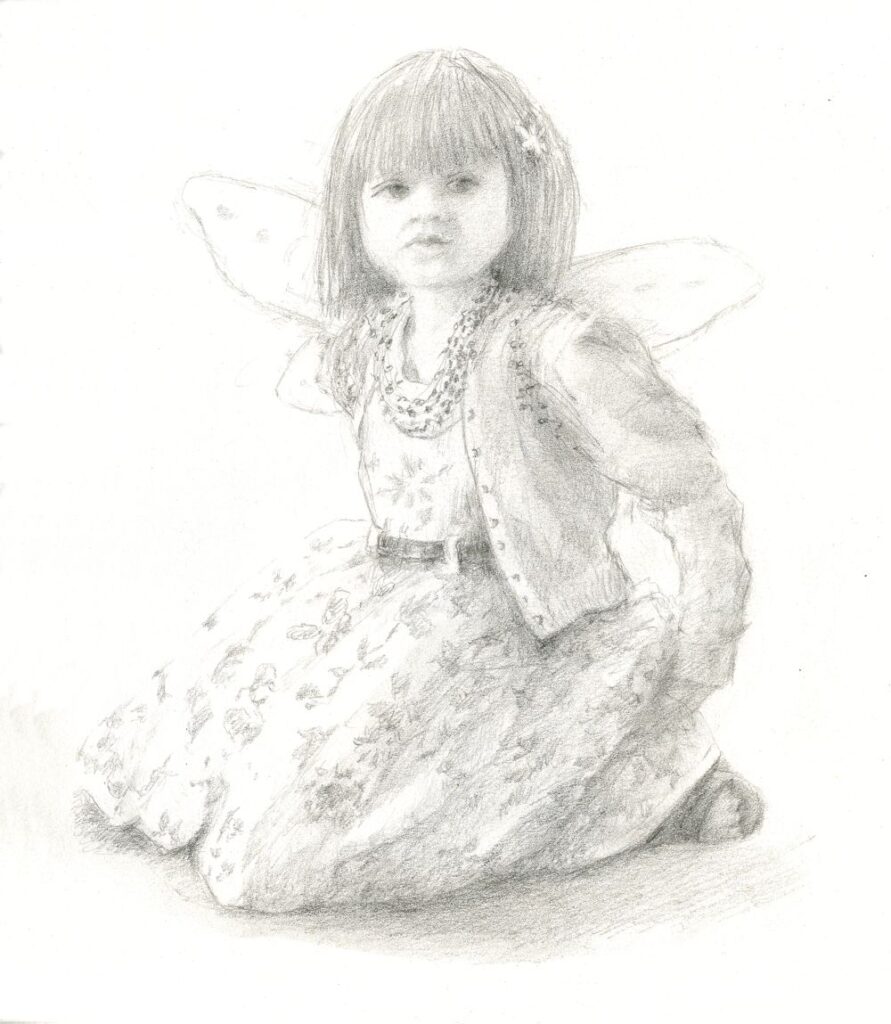
Pencil
This week’s challenge is to draw or paint the whole figure of a child, a child with another child, or a parent and child study. If you are fairly new to drawing I would advise drawing a single figure for your painting and to practice making as many small sketches of children whether from life or from photographs as you can, to train your eye to be accustomed to the fact that children’s heads are larger in proportion to their height than adult heads.
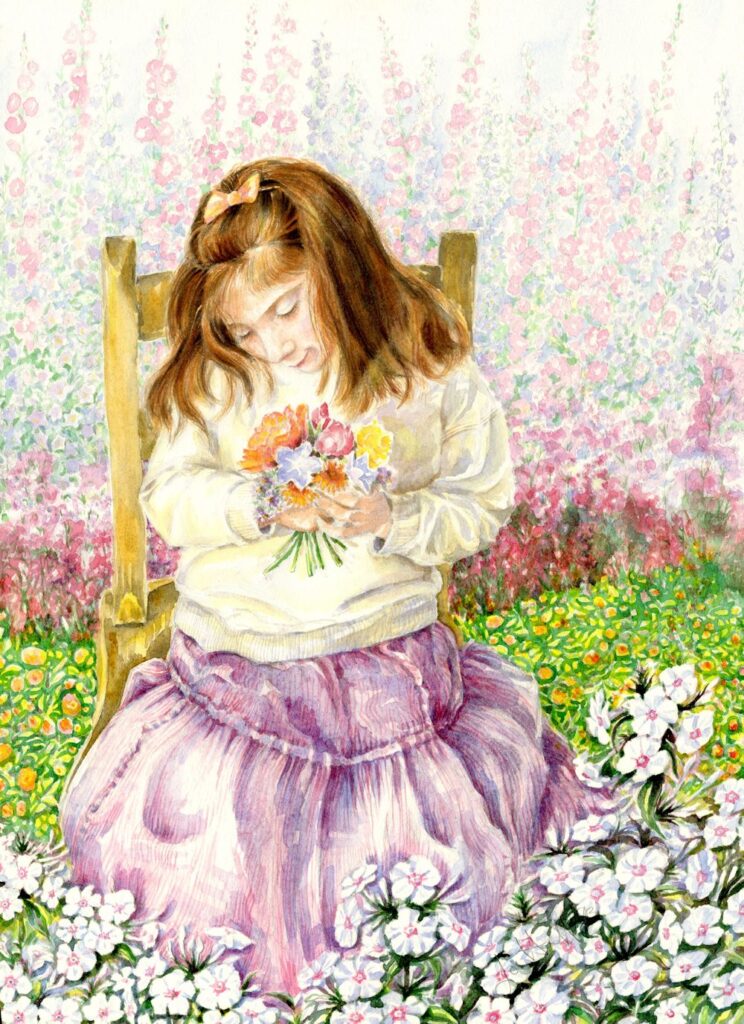
Watercolour
Not a whole figure but put into a context.
When painting young children either standing or involved with some activity it is useful to drop a perpendicular line from the highest point on your reference to work out the proportions of the body and the angles that the shoulders, hips and limbs and their relative lengths. Also put a perpendicular on your drawing paper. Some measuring will help you to see and draw taking into account any foreshortening that may occur as when an arm is pointing directly at you! If you prefer to draw completely freehand before painting, check the accuracy of your drawing by dropping a perpendicular from the same point as done for your reference.
As always also look for any clues from negative spaces that will help you get the proportions and lengths right.
With clothed figures, especially full skirts and baggy trousers try to imagine the limbs beneath them and their relation to the spine. Look at whether one shoulder is higher than the other and how this works in relation to the neck.
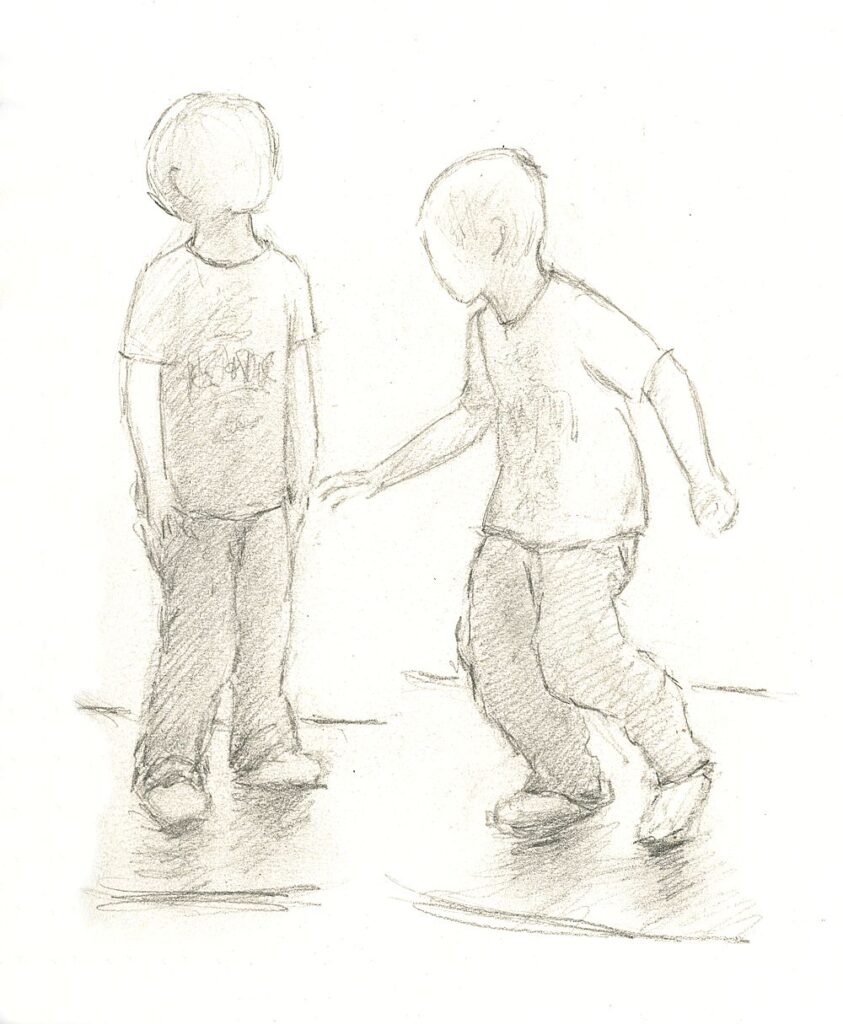
Pencil
The little sketch above is of six year old Toby balancing on a wobble board. Note how in the figure on the left both feet are bearing some of his weight and if a line is dropped from his neck it would fall between the two feet. In the figure on the right most of his weight is on his right foot (left in the image) and a line dropped from his neck shows the neck to be positioned directly above the load bearing foot. Try to draw simple line drawings from life or ‘photos of standing children standing with the load shared between their feet, and also where the load is mainly on one foot. Then try to draw some children in the same way when they are actively engaged in a sporting or other activity where they are in motion.
If you have the opportunity and wish to draw a group of children together especially where their forms overlap, treat the group as one whole shape before homing in on the individuals. Work lightly at first so that you can adjust as you look at your subject more critically as the drawing progresses. Lastly make sure you take more time looking than drawing so that all the main shapes are correct before committing yourself to painting.
In the initial stages of painting look very critically at the direction of the light and how this affects the tones that reveal the form of the child. Look also at how light can affect the darkest local colours, for example even a black T-shirt can appear quite pale on the side that is turned toward the light but retain its dark appearance where turned away from the light source.
Lastly look at shadows cast by the child’s form; e.g. a shadow of the head falling on to the child’s neck and shoulder; shadows below the feet which will help anchor the figure to the ground; and in some cases the shadow of the whole figure against the ground or cast on a wall etc.
For examples of drawing and painting children look at the Pinterest Board below:
https://www.pinterest.co.uk/jhall1282/portraits/babies-and-young-children/
Your Paintings:
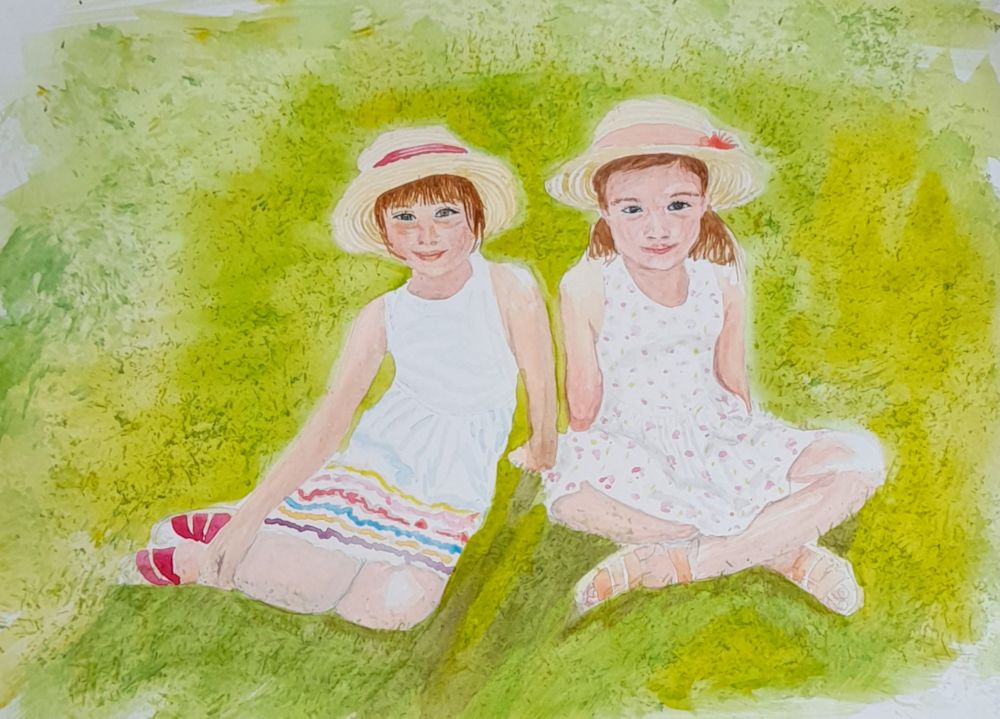
Watercolour by Maricarmen
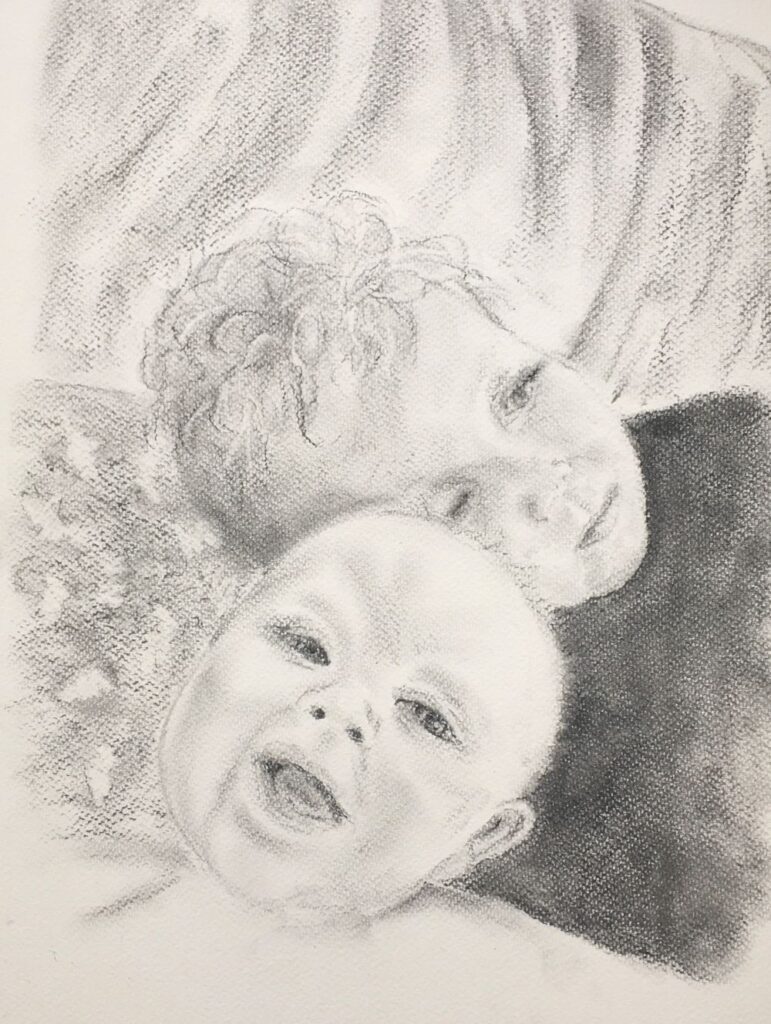
Charcoal by Heather
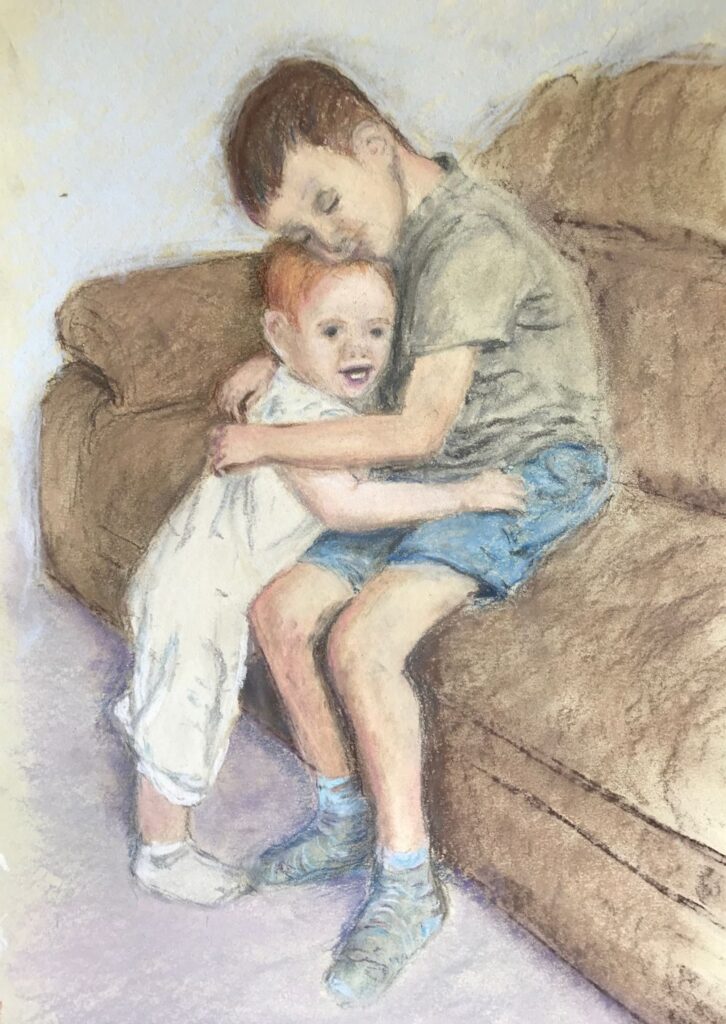
Pastel by Mali
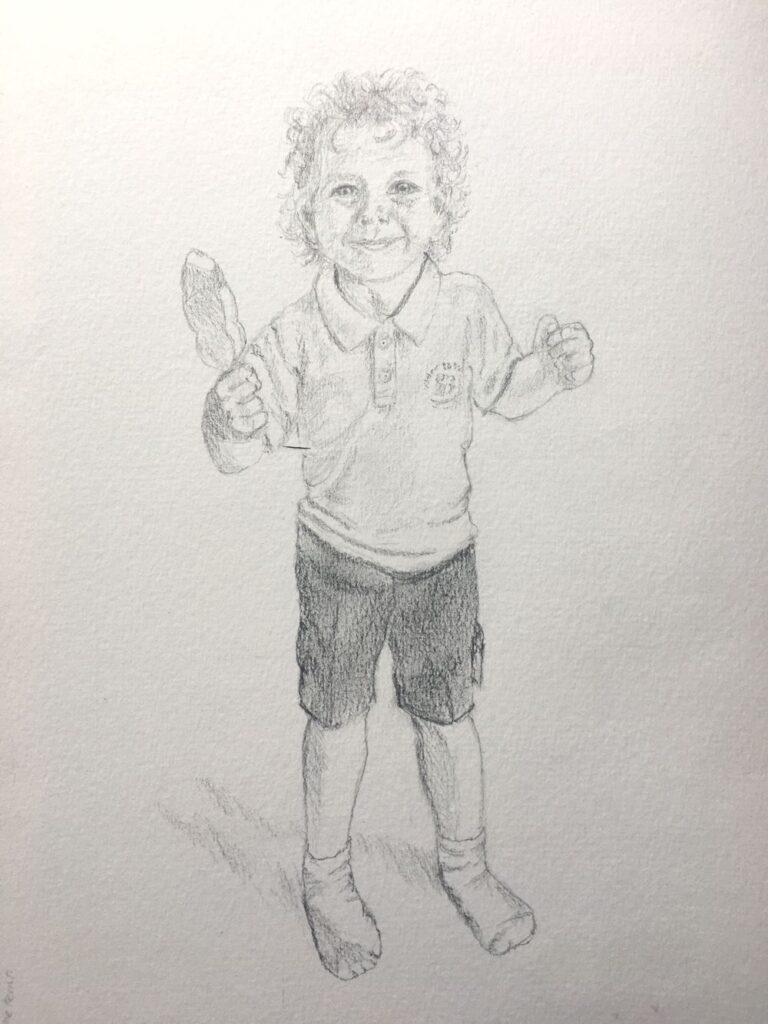
Pencil by Heather
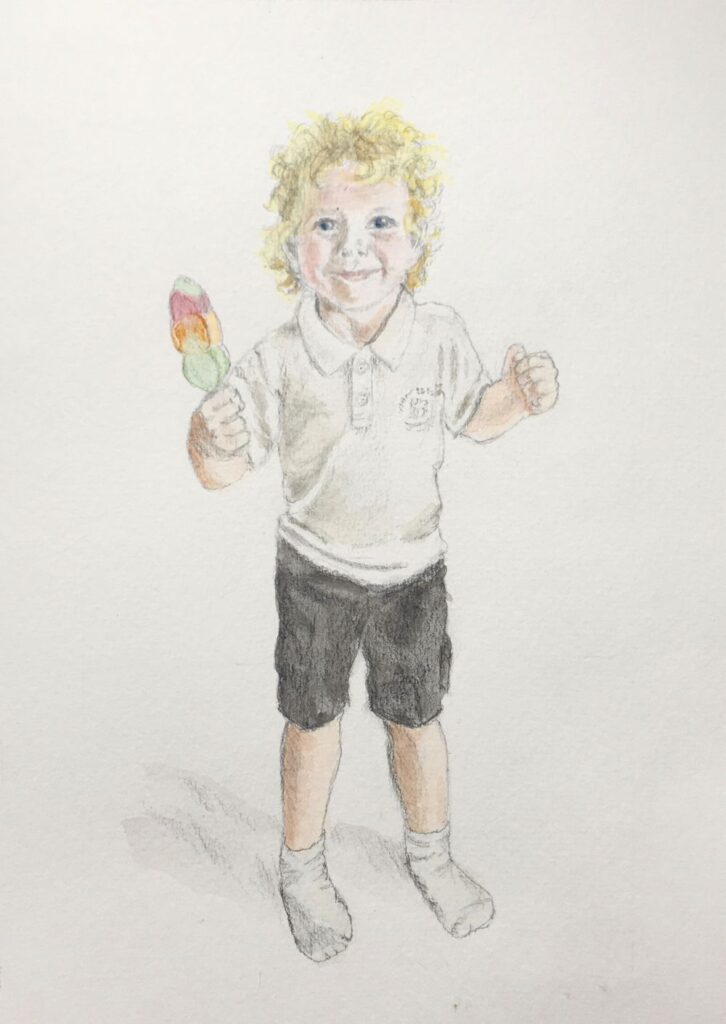
Pencil finished with Watercolour washes by Heather
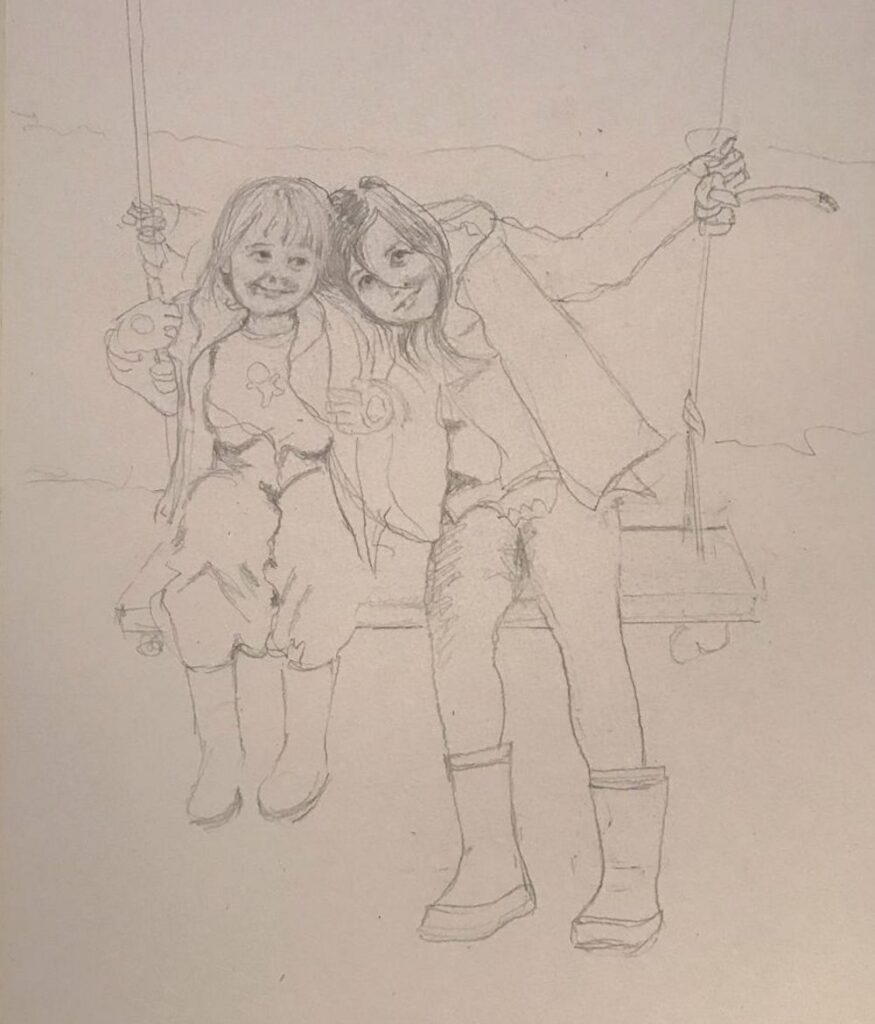
Pencil by Sarah
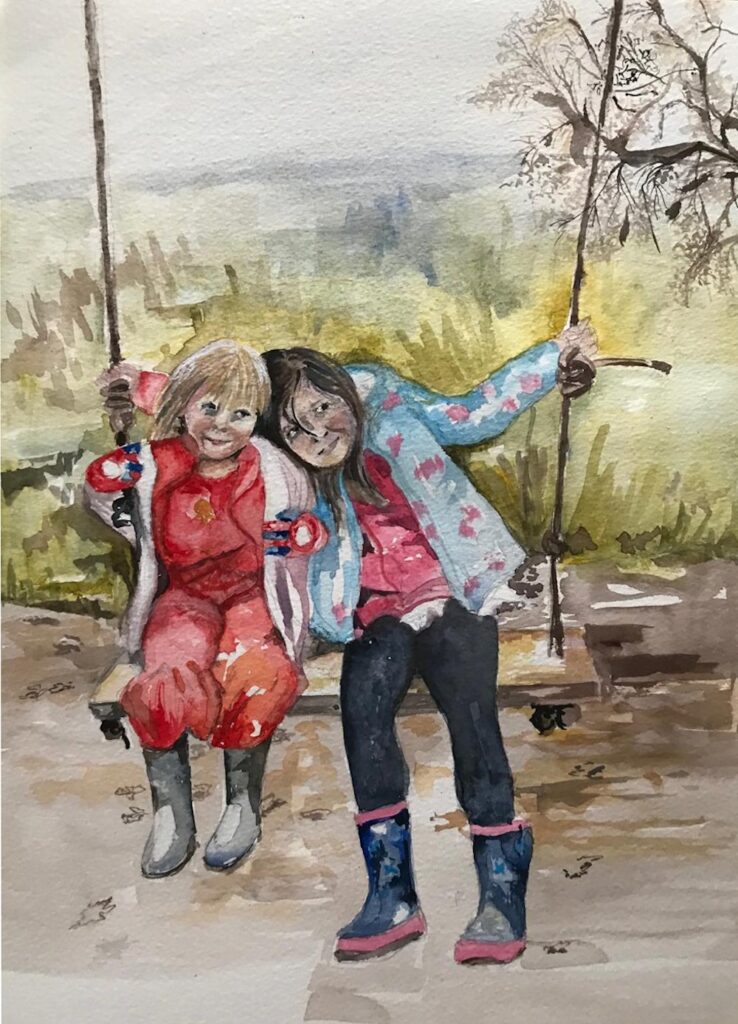
Watercolour by Sarah
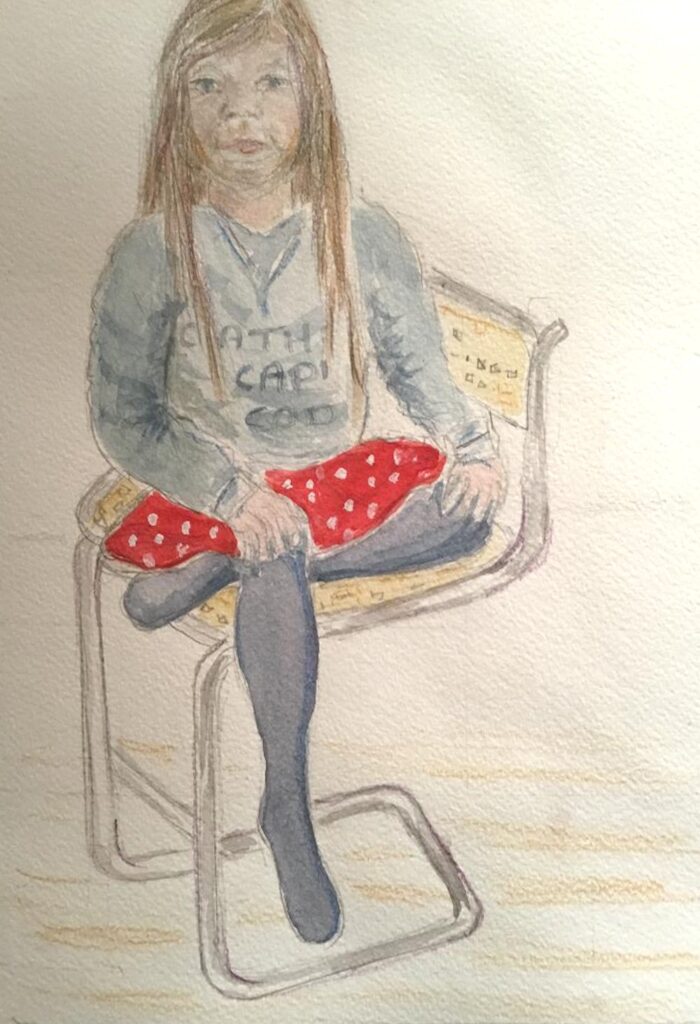
Watercolour by Ann